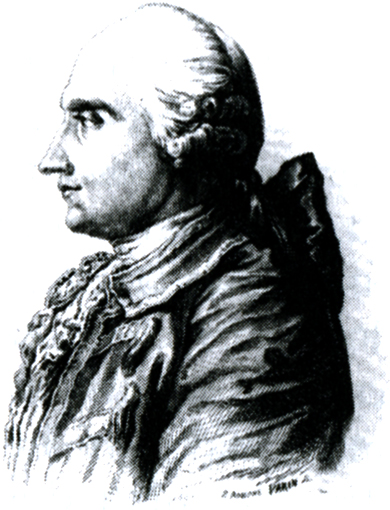Denis-Pierre-Jean Papillon De La Ferté on:
[Wikipedia]
[Google]
[Amazon]
 Denis-Pierre-Jean Papillon de la Ferté (
Denis-Pierre-Jean Papillon de la Ferté (
 Denis-Pierre-Jean Papillon de la Ferté (
Denis-Pierre-Jean Papillon de la Ferté (Châlons-en-Champagne
Châlons-en-Champagne () is a city in the Grand Est region of France. It is the capital of the department of Marne, despite being only a quarter the size of the city of Reims.
Formerly called Châlons-sur-Marne, the city was officially renam ...
17 February 1727 — Paris
Paris () is the Capital city, capital and List of communes in France with over 20,000 inhabitants, most populous city of France, with an estimated population of 2,165,423 residents in 2019 in an area of more than 105 km² (41 sq mi), ma ...
7 July 1794) was a connoisseur of art and an administrator (an ''Intendant'' and from 1763 the sole ''Intendant'') of the Menus-Plaisirs du Roi The Menus-Plaisirs du Roi () was, in the organisation of the French royal household under the Ancien Régime, the department of the Maison du Roi responsible for the "lesser pleasures of the King", which meant in practice that it was in charge of a ...
, the organization in the royal household (the ''Maison du Roi
The Maison du Roi (, "King's Household") was the royal household of the King of France. It comprised the military, domestic, and religious entourage of the French royal family during the Ancien Régime and Bourbon Restoration.
Organisation ...
'') that was responsible for the design and presentation of fêtes and ceremonies, weddings and funerals, at the court of France, beginning with his appointment in 1756. Even after the coming of the Revolution
In political science, a revolution (Latin: ''revolutio'', "a turn around") is a fundamental and relatively sudden change in political power and political organization which occurs when the population revolts against the government, typically due ...
, he was retained until 1792, to oversee the more overtly Republican events of what had always been political as well as cultural statements ; in producing them, the conflicts among the dukes who were ''Gentilhommes de la Chambre'', to whom Papillon de la Ferté reported and among whom he served as diplomat and peacemaker, also played a role. He was a victim of the Reign of Terror in 1794.
He was the son of Pierre Papillon de la Ferté (ca. 1682–1753), seigneur de la Ferté, ''président trésorier'' of the ''généralité'' of Champagne, the King's Lieutenant of Châlons.
His remarkable longevity in a position that was concentrated in his person in 1762, spanning two reigns and the change in taste from rococo
Rococo (, also ), less commonly Roccoco or Late Baroque, is an exceptionally ornamental and theatrical style of architecture, art and decoration which combines asymmetry, scrolling curves, gilding, white and pastel colours, sculpted moulding, ...
to neoclassicism, in music as well as the visual arts, is testament to his ability and character. His ''Journal'', published in 1887, gives an insight not only into the workings of the Menus-Plaisirs, but the Comédie française and the Comédie-Italienne
Comédie-Italienne or Théâtre-Italien are French names which have been used to refer to Italian-language theatre and opera when performed in France.
The earliest recorded visits by Italian players were commedia dell'arte companies employed b ...
, and also the music at court and the Opéra
This is a glossary list of opera genres, giving alternative names.
"Opera" is an Italian word (short for "opera in musica"); it was not at first ''commonly'' used in Italy (or in other countries) to refer to the genre of particular works. Most c ...
, and the ''Intendant'' 's role, reforming, rationalizing and redefining the official structure, encouraging artists of every kind, the model of the modern arts administrator
The arts are a very wide range of human practices of creative expression, storytelling and cultural participation. They encompass multiple diverse and plural modes of thinking, doing and being, in an extremely broad range of media. Both h ...
.
He was inspired to keep the journal by which he is intimately known in support of his possible future self-defence, a "preservative against the Bastille
The Bastille (, ) was a fortress in Paris, known formally as the Bastille Saint-Antoine. It played an important role in the internal conflicts of France and for most of its history was used as a state prison by the kings of France. It was stor ...
" as he would jokingly remark to the ''Premiers Gentilhommes de la Chambre'' to whom he reported, reassuring them that otherwise it would never see the light of day, for he entered his position following the scandal of malfeasance of his predecessor, M. de Curis.According to the notice he appended to the journal as he awaited the Revolutionary tribunal that would condemn him to death (Papillon de la Ferté 1887:1).
Notes
References
*Gruber, Alain-Charles, ''Les Grandes Fêtes et leurs Décors à l'Époque de Louis XVI'' (Geneva: Droz) (Geneva) 1972. ''passim''External links
{{DEFAULTSORT:Papillon de la Ferte,Denis-Pierre-Jean 1727 births 1794 deaths French civil servants French theatre managers and producers French people executed by guillotine during the French Revolution